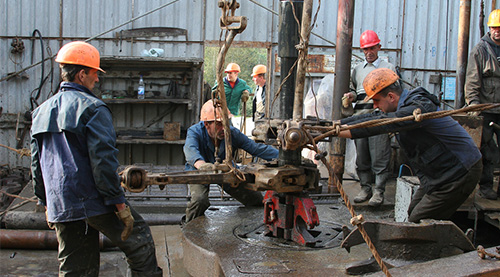
2015 Tight Oil Reality Check
September 17, 2015
Much of the cost-benefit debate over fracking has come down to the perception of just how much domestic oil and gas it can produce and at what cost. To answer this question, policymakers, the media, and the general public have typically turned to the U.S. Department of Energy’s Energy Information Administration (EIA), which every year publishes its Annual Energy Outlook (AEO).
In Drilling Deeper, PCI Fellow David Hughes took a hard look at the EIA’s AEO2014 and found that its projections for future production and prices suffered from a worrisome level of optimism.
Recently, the EIA released its Annual Energy Outlook 2015 and so we asked David Hughes to see how the EIA’s projections and assumptions have changed over the last year, and to assess the AEO2015 against both Drilling Deeper and up-to-date production data from key shale gas and tight oil plays.
In July 2015, Post Carbon Institute published Shale Gas Reality Check, which found that in 2015 the EIA is more optimistic than ever about the prospects for shale gas, despite substantive reasons for caution.
This month we turn our eyes to the EIA’s latest projections for tight oil.
Key Conclusions
- The EIA’s 2015 Annual Energy Outlook is even more optimistic about tight oil than the AEO2014, which we showed in Drilling Deeper suffered from a great deal of questionable optimism. The AEO2015 reference case projection of total tight oil production through 2040 has increased by 6.5 billion barrels, or 15%, compared to AEO2014.
- The EIA assumes West Texas Intermediate (WTI) oil prices will remain low and not exceed $100/barrel until 2031.
- At the same time, the EIA assumes that overall U.S. oil production will experience a very gradual decline following a peak in 2020.
- These assumptions—low prices, continued growth through this decade, and a gradual decline in production thereafter—are belied by the geological and economic realities of shale plays. The recent drop in oil prices has already hit tight oil production growth hard. The steep decline rates of wells and the fact that the best wells are typically drilled off first means that it will become increasingly difficult for these production forecasts to be met, especially at relatively low prices.
- Perhaps the most striking change from AEO2014 to AEO2015 is the EIA’s optimism about the Bakken, the projected recovery of which was raised by a whopping 85%.
- As it has acknowledged, the EIA’s track record in estimating resources and projecting future production and prices has historically been poor. Admittedly, forecasting such things is very challenging, especially as it relates to shifting economic and technological realities. But the below ground fundamentals— the geology of these plays and how well they are understood—don’t change wildly from year to year. And yet the AEO2015 and AEO2014 reference cases have major differences between them. As Figure 13 shows, with the exception of the Eagle Ford, the EIA’s projections for the major tight oil plays have shifted up or down significantly.
After closely reviewing the Annual Energy Outlook 2015, David Hughes raises some important, substantive questions: Why is there so much difference at the play level between AEO2014 and AEO2015? Why does Bakken production rise 40% from current levels, recover more than twice as much oil by 2040 as the latest USGS mean estimate of technically recoverable resources, and exit 2040 at production levels considerably above current levels? How can the Niobrara recover twice as much oil in AEO2015 as was assumed just a year ago in AEO 2014? What was the thinking behind the wildly optimistic forecast for the Austin Chalk in AEO2014 that required a 78% reduction in estimated cumulative recovery in AEO2015? How can overall tight oil production increase by 15% in AEO2015 compared to AEO2014 while assuming oil prices are $20/barrel lower over the 2015-2030 period?
America’s energy future is largely determined by the assumptions and expectations we have today. And because energy plays such a critical role in the health of our economy, environment, and people, the importance of getting it right on energy can’t be overstated.
It’s for this reason that we encourage everyone—citizens, policymakers, and the media—to not take the EIA’s rosy projections at face value but rather to drill deeper.
image credit: LaKirr / Shutterstock.com

The entire global economy is running on dreams and desires. As soon as the markets open their eyes to reality, another great crash will begin. Regardless, humanity is powering down and there is nothing we can do about it.
Tight takes flight:
http://ourfiniteworld.com/2015/09/29/low-oil-prices-why-worry/